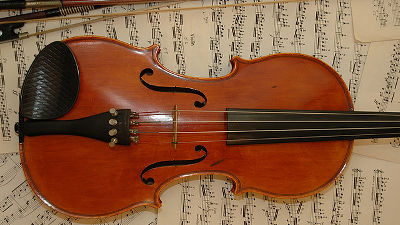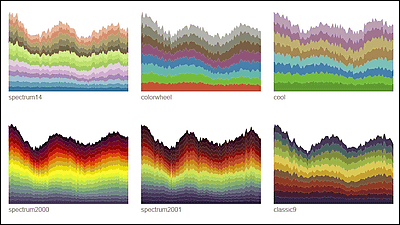"Musical Chord Progression Arpeggiator" which can reproduce arbitrary arpeggio by designating chords · scale and sound number

For those who slightly musical theory, music plays multiple soundsChord(Code), and what is called "Doremifa Solaside" there are manyModalityIt is crazy to know that there are modes (modes) exist. Trying to remember it in theory makes it hard to make code and mode, and then born from itarpeggiobut,"Musical Chord Progression Arpeggiator"You can listen to all possible arpeggios while feeling the difference between chord progression and mode simply by simply clicking on the browser.
CodePen - Musical Chord Progression Arpeggiator
http://codepen.io/jakealbaugh/full/qNrZyw
When you access the site, this screen will be displayed. Various setting items are displayed on the screen, and the item being selected is shown in orange.
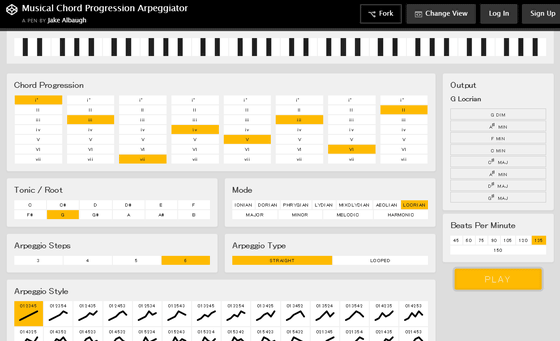
"Chord Progression" just below the keyboard specifies the chord progression you want to generate the arpeggio.

The code is designed to flow from the left to the right when actually playing, and the code name is not "C" or "Am", but "I" "ii" "IV" "vi"Roman numeralsIt is written in. Also, the only code that can be specified is seven codes (diatonic codes) from i to Vii, which can not be modulated in the middle.
Below Chord Progression, there are "Tonic / Root" which specifies the chord progression key by note name and "Mode" which specifies the spirit (mode).

Mode is anyhow confusing so we omit the explanation here, but so-calledChurch rotation(Iorian: Major Scale), "DORIAN (Dorian)", "PHRYGIAN (Frijian)", "LYDIAN (Lydian)", "MIXOLYDIAN (Mixolidian)", "AEOLIAN (Tioral Miner Scale ), "LOCRIAN (Roquorin)", and "MELODIC (Melodic Minor)" and "HARMONIC (Harmonic Minor)" (MAJOR and MINOR are IONIAN And AEOLIAN overlap). Even if you do not know what you are talking about, if you actually try to play it, you can feel a small difference ... ... should be.
The actual code name set from "Tonic / Root" and "Mode" is displayed in "Output" at the upper right of the screen. It is convenient because you can decide chord progression while referring to here.
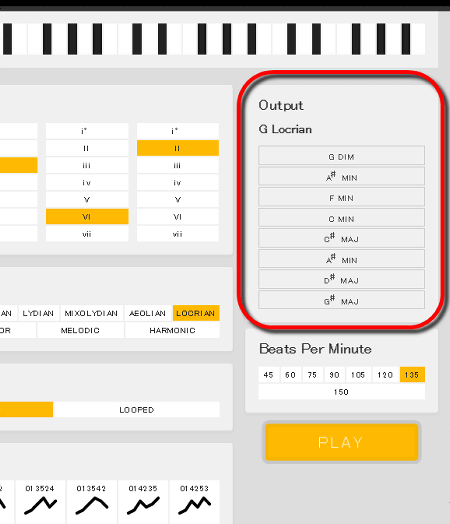
"Arpeggio Steps" specifies the number of sounds of the arpeggio to be generated between "3" and "6". You can choose "STRAIGHT" and "LOOPED" next to "Arpeggio Type". If you understand STRAIGHT as "Domiso" and LOOPED as "DOMISOMID" if you understand whether it will come back one way or not.

Then, it is the item of "Arpeggio Style" at the bottom of the screen that sets "all possible arpeggios". All waveforms are all arpeggios of different styles, for example, when Arpeggio Steps is "4", next to "0123" is "0132 ", the next is" 0213 "In this way, all possible arpeggios that can be thought of by changing arpeggio stacking one by one are displayed here. The number of derived arpeggios is 4 × 3 × 2 × 1 =24 types.

If Arpeggio Steps is "6", a large number of arpeggios will be displayed. Of course the type is 6 × 5 × 4 × 3 × 2 × 1 =Total 720 kinds.
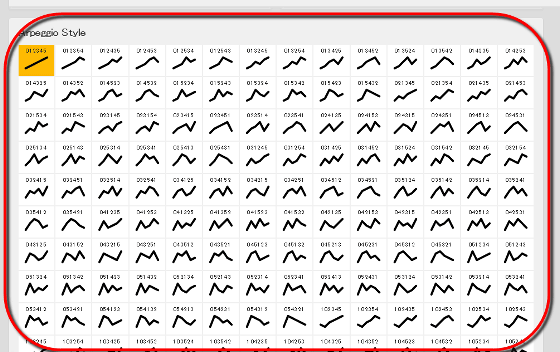
After making the settings, click "START" in the lower right corner, the arpeggio according to chord progression and mode will be played.

Even during playback, you can change the parameters in various ways, so you can distinguish small differences in real time, so it seems to be perfect for studying chords and modes. However, there were times when noise, delay, sound skipping occurred depending on PC specifications and browsers. Although it is in a somewhat lacking state of stability of operation, it is useful when you want to listen to the arpeggio easily. By the way, when writing articles, the browser "Opera" was the most stable browser.
It is a bulletin board site abroadForum on RedditThen, people who thank the impression saying "You can use it for composition of game music" and others say thanks. Besides that, for example, if Mode is set to "MAJOR"Chord Progression to"I → V → vi → iii → IV → I → IV → V"Arpeggio Steps sets"Four", Arpeggio Type as"STRAIGHT", Arpeggio Style as"3021"And play it,Transcendental skill guitaristThere are various ways of using it, such as playing the atmosphere of classical arpeggio playing style that was popular in solo performance.
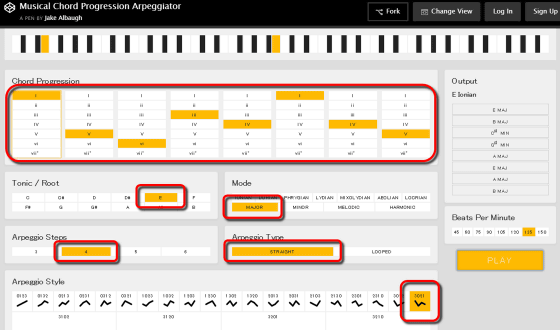
In addition, Musical Chord Progression Arpeggiator can also operate with smartphone browser. There seems to be some browsers that behave unstably as in the PC environment, so it is recommended to try various types.

Related Posts:
in Review, Web Service, Art, Posted by darkhorse_log




